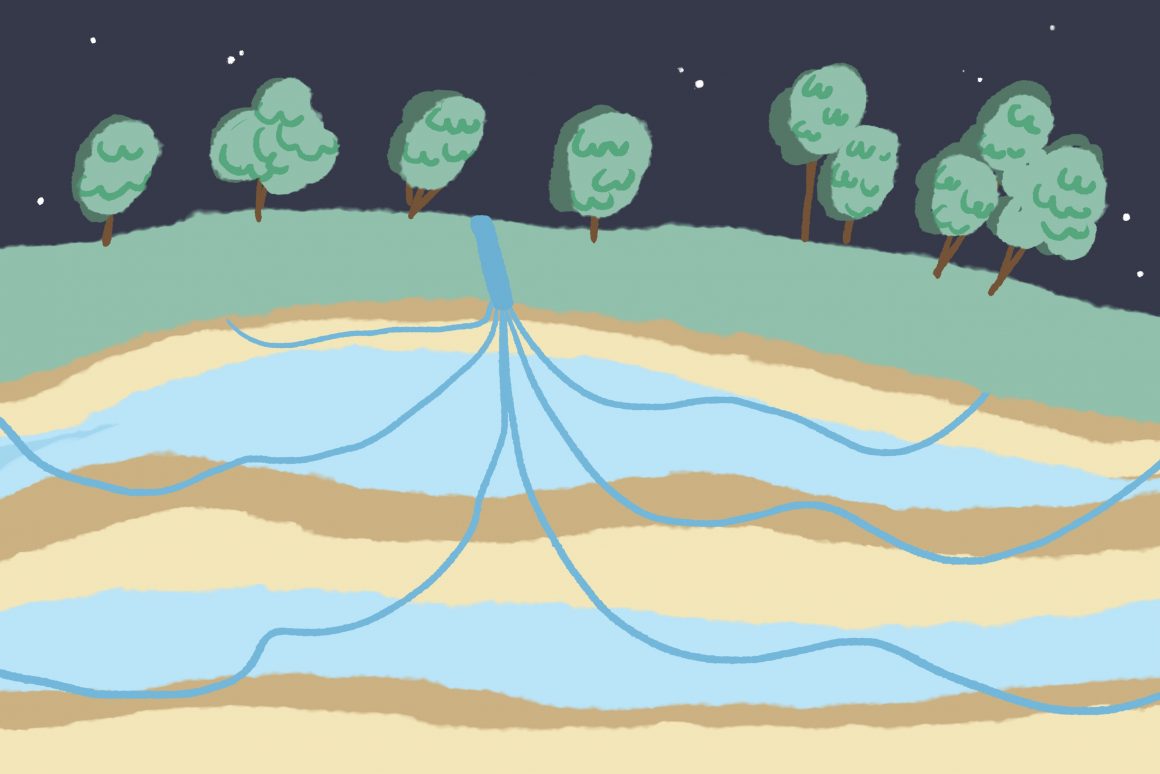
Urgent action needed for conservation of freshwater, a finite resource
By Leonie O’Sullivan, March 11 2024—
In a highly collaborative endeavour, researchers from the United States, Switzerland, England and Saudi Arabia joined forces to illuminate the global phenomenon of dwindling aquifers – underground layers of porous rock or sediment that store water. The research, published in Nature, raises significant concerns given that aquifers serve as our primary water source. Aquifers store 30 per cent of Earth’s available freshwater while 69 per cent is held in polar ice caps, leaving just a mere one per cent attributed to rivers and lakes.
Interestingly, to learn more about underground aquifer water levels, one can look up to the sky for answers. NASA’s Gravity Recovery and Climate Experiment (GRACE) satellites can be used to detect changes in Earth’s gravity field in order to estimate the volume of water stored underground in the region. As you may know, individuals weigh less on the moon or experience less gravity because the moon is much smaller and has a lower mass than the Earth. The amount of groundwater being stored affects Earth’s mass and the local gravity in that area – highlighting that gravity is not uniformly constant across the planet. This variation in gravity can be used to estimate changes in aquifer volumes.
However, the authors noted that using the satellites to estimate aquifer volumes is not optimal due to the coarse resolution, posing a challenge to determine local changes. Instead, the aquifer maps from the satellites were used to help define distinct aquifer systems. Measurements taken in wells worldwide over a period of eight years were used by the researchers to assess changes in the water levels of aquifer systems – two or more connected aquifers. The data, obtained from in situ measurements of approximately 170,000 monitoring wells belonging to 1,693 aquifer systems in more than 40 countries, was compiled and analyzed.
More than one-third of the aquifer systems experienced a drop in groundwater levels at a rate exceeding 0.1 meters per year, and twelve per cent diminished at a rate of 0.5 meters per year. A small proportion of the wells were recovering with groundwater levels rising at a rate of 0.1 meters per year in six per cent of the aquifer systems and faster than 0.5 meters per year in one percent of the systems. A notable example of a successful recovery is Arizona’s East Salt River basin, where human intervention recharged groundwater with surface water. Additionally, inter-basin surface-water transfers, involving the pumping of water from areas with surplus to those facing shortages, are used to divert one million litres of water each year from the Yellow River to Taiyuan City in China to help replenish the aquifer system.
The researchers contrasted the decline in groundwater levels in the current century with that of the late twentieth century. In 30 per cent of the aquifer systems, groundwater levels declined at an accelerated rate compared to the previous century. The majority of aquifer systems experiencing accelerated groundwater depletion also faced reduced precipitation. Less precipitation can lead to lower natural recharging and increased groundwater abstraction. Serious risks associated with aquifer depletion include the potential for wells to run dry and the occurrence of land subsidence – the sinking of the ground. Due to the connection or precipitation and aquifer recovery, climate change may pose a serious risk for freshwater availability.
As seen in Arizona and Taiyuan City, it is possible to slow down or even reverse the decline of groundwater levels. There was also a reported deceleration of groundwater loss in the Eastern Saq aquifer of Saudi Arabia, potentially attributed to policies put in place to limit agricultural water use. It is important to emphasize that groundwater levels recover at a much slower rate than their depletion. The average rate of groundwater recovery is four times slower than the rate of groundwater loss in the twenty-first century.
Groundwater loss is prevalent in arid climates, where many of the currently diminishing aquifer systems are situated beneath drylands. The cultivation of drylands exacerbates this trend, with the rates of aquifer water loss strongly correlating with the extent of cultivated land. Additionally, dryland aquifers exhibit a prolonged recovery period compared to humid climates. This is particularly concerning as groundwater often serves as the sole source of drinking water for communities in drylands.
The loss of groundwater in aquifers raises significant concerns as it jeopardizes the availability of drinking water, impacts ecosystems, and poses economic threats. Additionally, groundwater depletion can lead to substantial infrastructure damage through land subsidence and may even threaten food availability by impeding agricultural productivity. Despite these challenges, various examples worldwide demonstrate the potential for aquifer replenishment, albeit at a slower rate compared to depletion. Governments worldwide should take immediate action to implement policies to reverse groundwater depletion.
